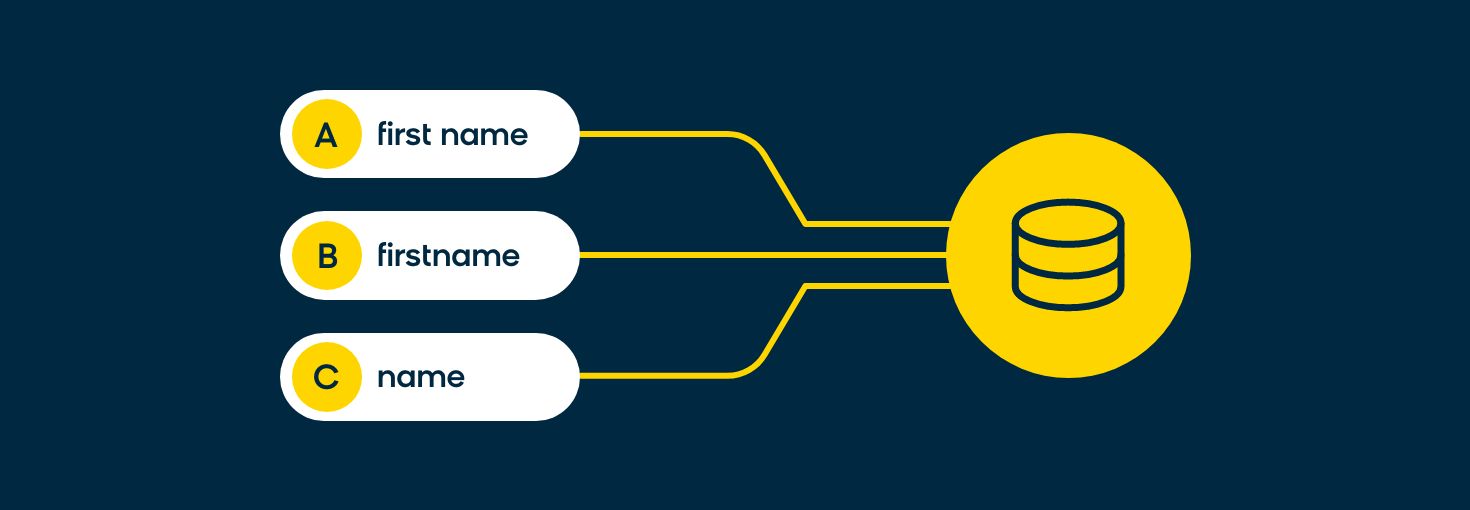When retailers use artificial intelligence (AI), it allows them to better serve customers and ultimately generate more revenue. Of the organizations that have deployed AI, 80% use predictive analytics, which identifies trends in historical data to forecast future outcomes.
Within ecommerce, predictive analytics has several use cases, from optimizing the supply chain to lowering logistics costs and reducing organizational risk. One of the most effective use cases is predictive marketing. Here, retailers use data insights to guide them toward the best marketing channels, the best time to send communications, and the best product recommendations for individual customers.
In this article, we explore predictive analytics in depth to discover how retailers are benefitting today, and what best practices marketers should follow to maximum value.
What Is Predictive Analytics?
There are four types of analytics:
- Descriptive analytics: using data to say what happened
- Diagnostic analytics: using data to explain why something happened
- Predictive analytics: using data to forecast what is likely to happen next
- Prescriptive analytics: using data to make recommendations on how to optimize outcomes
Predictive analytics is the point at which AI starts to give retailers a competitive edge because it allows them to target customers with the right products at the right time and in the right marketing channels.
It uses historical customer data, market trends, and modeling techniques to make informed predictions about the future. It means that when a customer performs a site search, they are shown relevant results with personalized product recommendations — for example, if an individual is known to prefer chunky knitwear, these products are prioritized over sweatshirts, turtlenecks, or hoodies.
Additionally, rather than just providing a retailer with raw data, predictive analytics provides valuable intelligence to support forecasting. For example, if the data shows demand for Christmas pudding is highest in the first week of November, retailers can ensure they hold sufficient stock to meet that demand.
How Does Predictive Analytics Work?
Customers create data with every action they take, such as searches, email clicks, social media comments, inquiries, purchases, support questions, returns, and complaints. Additionally, there are organizational data points such as churn, productivity, margins, and efficiencies, as well as external market factors like competitor data, weather, and holidays.
Predictive analytics consolidates all this data across all platforms to create a single view and connect the dots. It creates a better understanding of the business context for more accurate forecasting to enhance the customer experience and optimize operations.
The Benefits of Using Predictive Analytics in Ecommerce
In the following six sections, we explore some of the key use cases for predictive analytics within ecommerce.
Forecast Market Demands
Forecasting market demand remains one of the most challenging, and yet most important, activities a retailer undertakes. Get it right, and the business maximizes revenue and profit. Get it wrong and the business risks over/understocking.
The biggest problem is that several influencing factors lie outside a retailer’s control — for example, competitor pricing and when they choose to discount, weather conditions and natural disasters, or even a boat getting stuck in the Suez Canal and blocking shipments.
While traditional inventory management relies on manual analysis and historical data, predictive analytics automates the process to speed time-to-insight.
Now, retailers can optimize inventory levels and ensure they have sufficient stock to meet demand without tying up excess capital in unnecessary inventory. Additionally, they can execute targeted campaigns that push better-performing products to the right customer segments. And, they can identify potential issues earlier to (ideally!) mitigate the risk or ensure timely communications with customers to set expectations.
Predict Customer Behavior
AI allows retailers to better predict customer behavior, which enables them to benefit from:
- Campaign efficiency optimization: target the right customers with the right campaigns
- Revenue optimization: target segments that are likely to generate more revenue
- Omnichannel usage: target the best channels to reach different customer segments
It has revolutionized marketing campaigns by enabling retailers to better segment customers for a deeper understanding of their desires and pains. Furthermore, they can assign loyalty tiers according to customers’ past behaviors, like purchases, email engagement, and browsing history. This allows retailers to execute targeted campaigns that encourage certain actions through incentivization.
Additionally, sentiment analysis allows retailers to “read between the lines” to see their customer’s emotions and know how to fulfill their needs at that moment. With a deeper understanding of each customer, retailers can personalize recommendations based on that user’s preferences with a 1-to-1 approach to marketing.
Enable Dynamic Pricing
AI helps retailers adjust their prices in real time in response to changing market conditions. For example, when a competitor is low on stock, prices can be inflated to capitalize on a lack of alternatives, and when the market is saturated, attractive discounts can be used to lure customers in.
Because they can determine the optimal price for a diverse range of products at any time, pricing strategies remain competitive all the time. Furthermore, it’s a smart tactic to retarget customers. For example, let’s say a customer interacted with a campaign by clicking on a link in an email, but they didn’t convert. Using dynamic pricing, a retailer could offer a targeted discount to convert that user, and then trigger a new campaign to upsell or cross-sell related products and services.
Detect Fraud
Online payment fraud costs ecommerce businesses $48 billion worldwide, with that figure continuing to increase year-on-year. It’s why fraud detection is a key driver behind the adoption of predictive analytics — a market that nearly doubled in just three years (from $6 billion in 2019 to $11 billion in 2022).
Using AI retailers can establish what’s “normal” for their business. Then, continuous monitoring of the environment enables unusual transactions, unexpected changes in customer behavior, or abnormal patterns in financial data to be pinpointed and flagged for further investigation or additional checks/verification.
Increase Customer Loyalty
When markets are saturated, it’s hard for retailers to stand out. Personalized experiences encourage 4 in 5 consumers to commit to purchase, but how can retailers implement this strategy effectively?
Loyalty programs help tier customers based on their past behavior so that retailers can send personalized and specialized emails to these tiers. For example, sending a congratulatory email once a customer reaches a higher tier can boost brand loyalty and customer satisfaction.
Shopping-as-a-service helps retailers sort through thousands of products in seconds and return relevant results that are based on a customer’s preferences, style, and budget — and because AI-powered systems learn over time, the results become more and more accurate.
Gamification also helps boost customer engagement, build brand loyalty, and drive sales. It rewards customers for taking certain actions — for example, giving points that grant early access to product launches — to improve their “stickiness” with the brand.
Boost Profits
When retailers truly know their customers, it allows marketers to determine the best way to improve targeting techniques to optimize ad spend, the customer journey, and the online user experience. For example, you can identify lookalike customer segments based on purchase intent to encourage engagement and conversions.
Marketing campaigns that use predictive analytics are known to be 1.8x more effective at consistently exceeding shared organizational goals and 2.9x more effective at securing revenue growth. It provides a competitive edge because retailers can uncover new knowledge, anticipate their customers’ next moves, and become a well-oiled marketing machine.
Best Practices for Predictive Analytics in Ecommerce
In the following four sections, we look at how retailers can implement predictive analytics to the greatest effect within their marketing efforts:
Focus on Business Goals
AI has always been a subject of fascination, and since the launch of ChatGPT, there’s been even more conversation and experimentation for how the technology will benefit ecommerce.
However, it’s important to not be distracted by the new shiny tech. Instead, evaluate AI with the same rigor as any new investment. Ask yourself: What is the business trying to achieve? It may be that AI isn’t the best way to ensure a specific outcome.
Use the overall business vision and its goals to determine the best-fit technology. Beyond delivering a great return on investment, this focus also ensures the technology becomes core to the operations and is properly implemented and adopted across the business.
Determine the Type of Data You Need
One of the biggest headaches marketers face is how every system they use produces vast quantities of data. Too much data can be counterproductive and may result in the business overlooking important insights.
Just because the data exists doesn’t mean it needs to be collected and analyzed. Again, retailers must be guided by the business goals to focus on the data that supports the outcomes they seek. For example:
- If the business objective is to reduce customer churn, the most valuable insights are revealed in returns and complaints
- If the objective is to boost Black Friday sales by 20%, the important data is historical purchases, competitor data, and social commentary
- If the business objective is to enter a new market, useful data would include market trends, customer sentiment, and lookalike customer analysis
Continuously Update Your Data
AI is only ever as good as the data it uses. Therefore, accurate predictions require accurate data.
When retailers collect data from disparate sources, it can lead to inconsistencies and errors. Additionally, there can be issues when integrating systems if the fields don’t match — for example, if system A uses “first name,” system B uses “firstname,” and system C uses “name.”
It pays to spend time upfront planning how to connect the dots between different data sets, and then making time to continuously “clean” data — updating details, correcting errors, and deleting redundant data.
Use the Right Tools
If you have the right solutions at your fingertips, it’ll be easy to take advantage of everything predictive analytics has to offer and reap the rewards. Here are some examples of how companies have found success with predictive analytics:
- Yves Rocher increased its purchase rate by 11x when compared to top-seller recommendations because it can share real-time personalized product recommendations
- Benefit Cosmetics secured 40% higher revenue after its product launch because it executed a targeted omnichannel campaign across three phases: pre-launch, launch, and post-launch
- The Thinking Traveller increased booking inquiries by 33% through AI-powered web optimization tools, which helped customers find exactly what they were looking for
- The Vitamin Shoppe boosted its add-to-cart rate by 11% through improved site search — as well as increased search revenue per visitor by 5.69%
- Proffsmagasinet now sends 33% fewer emails but has doubled its conversion rates because predictive marketing enables it to send the right messages and the right time
Get Powerful Predictive Analytics With Bloomreach Engagement
Predictive analytics enables marketers to build an ecommerce experience that’s unique to each customer at every stage of the shopping journey. But to really unlock the full potential of predictive analytics and boost your marketing intelligence, you’ll need a platform that can unify your customer data and translate that into bottom-line impact.
That’s where Bloomreach Engagement can help. Powered by a customer data engine, Bloomreach Engagement allows you to bring all your customer data together in a single marketing view, and then use that data to personalize the customer experience across all your channels in real time.
Ready to get started? Find out how you can put predictive analytics into action with these AI-driven online shopping examples.


















